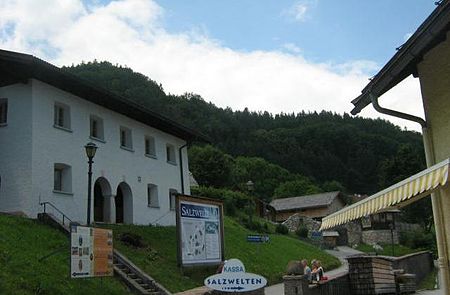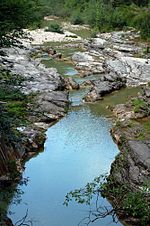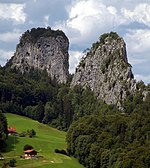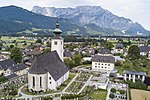Hallein Salt Mine
Buildings and structures in Salzburg (state)Economy of Salzburg (state)HalleinMining museums in AustriaMuseums in Salzburg (state) ... and 4 more
Salt mines in AustriaSalt museumsShow minesUnderground mines in Austria

The Hallein Salt Mine, also known as Salzbergwerk Dürrnberg, is an underground salt mine located in the Dürrnberg plateau above Hallein, Austria. The mine has been worked for over 2600 years since the time of the Celtic tribes and earlier. It helped ensure nearby Salzburg would become a powerful trading community. Since World War I, it has served as a mining museum, known for its long wooden slides between levels.
Excerpt from the Wikipedia article Hallein Salt Mine (License: CC BY-SA 3.0, Authors, Images).Hallein Salt Mine
Ramsaustraße,
Geographical coordinates (GPS) Address Phone number Website External links Nearby Places Show on map
Geographical coordinates (GPS)
| Latitude | Longitude |
|---|---|
| N 47.667049 ° | E 13.090339 ° |
Address
Salzwelten Hallein
Ramsaustraße 3
5422 , Bad Dürrnberg
Salzburg, Austria
Open on Google Maps











